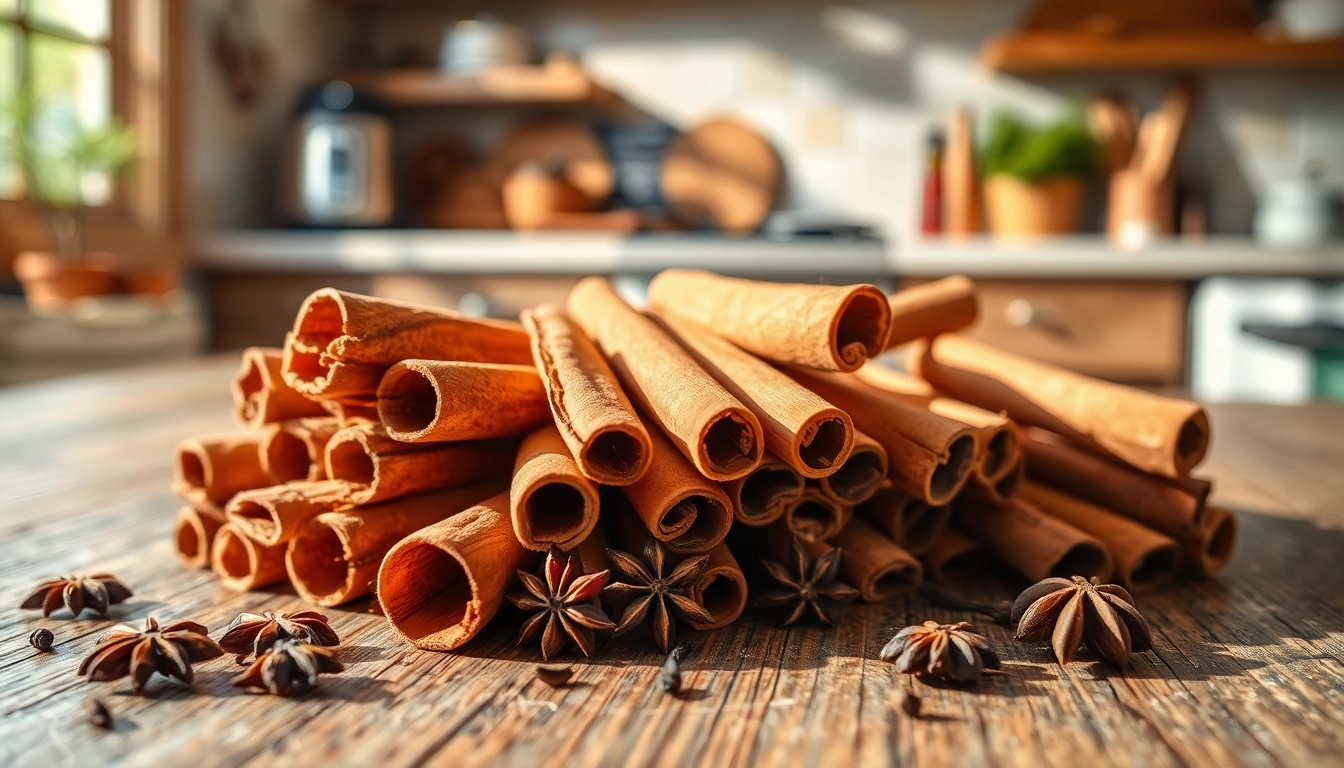The Health Benefits and Culinary Uses of Cinnamon Bark

Understanding Cinnamon Bark: Varieties and Characteristics
1.1 What is Cinnamon Bark?
Cinnamon bark is the aromatic inner stem of trees belonging to the genus Cinnamomum, which has been used for thousands of years for its culinary and medicinal properties. The bark is harvested and dried to create the spice that is familiar to many, whether it be in powdered form or as rolls known as cinnamon sticks. The distinct flavor and fragrance of cinnamon come from its essential oils, primarily cinnamaldehyde, which also contribute to its health benefits.
1.2 Types of Cinnamon Bark: Ceylon vs. Cassia
There are several species of cinnamon, but the two most prominent are Ceylon cinnamon (Cinnamomum verum) and Cassia cinnamon (Cinnamomum cassia). Ceylon, often referred to as “true cinnamon,” has a delicate and sweet flavor, making it ideal for culinary applications that require a mild spice. In contrast, Cassia cinnamon is more pungent and spicy, and it is what most Western countries commonly refer to as cinnamon. Cassia is also significantly cheaper and is often found in grocery stores.
1.3 Identifying Quality: How to Choose the Best Cinnamon Bark
When selecting cinnamon bark, quality matters significantly. Ceylon cinnamon tends to be lighter in color, softer, and has a multi-layered, more delicate structure compared to the thicker and hard Cassia. To ensure you’re purchasing high-quality cinnamon bark, look for organic certifications and purchase from reputable sources. Particularly, check for the origin: genuine Ceylon cinnamon is primarily sourced from Sri Lanka and its flavor profile is considered superior to many Cassia varieties. You can explore options such as Cinnamon Bark that offer unique varieties and sourcing transparency.
Culinary Uses of Cinnamon Bark
2.1 Common Recipes Featuring Cinnamon Bark
Cinnamon bark is a versatile ingredient used across various culinary traditions. It can be infused into beverages like chai tea or mulled wine, used to enhance the flavor of stews and soups, or incorporated into desserts like cinnamon rolls and cakes. One popular application in Middle Eastern cooking is pilafs and rice dishes, where it infuses a warm spice that balances the richness of meats and broths.
2.2 Pairing Flavors: What Goes Well with Cinnamon Bark
Cinnamon pairs well with a variety of flavors, including sweet, savory, and spicy profiles. For sweetness, it complements apples, pears, and bananas, making it a common addition to fruit-based desserts. In savory dishes, it works well with meats such as lamb and chicken, as well as vegetables like sweet potatoes and carrots. It harmonizes beautifully with other spices, notably ginger, nutmeg, and clove, creating a depth of flavor in spiced dishes and baked goods.
2.3 Cooking Techniques for Enhancing Flavor
To extract maximum flavor from cinnamon bark, consider various cooking techniques. Simmering it in liquids allows its essential oils to release fully, enriching the dish. For baked goods, using whole sticks can impart a subtle flavor that ground cinnamon may not achieve. For those wishing to experiment, toasting the bark in a dry skillet to enhance its aroma before using it in recipes is another effective technique.
Health Benefits of Cinnamon Bark
3.1 Nutritional Composition of Cinnamon Bark
Cinnamon is not just a flavoring agent but also a powerhouse of nutrients. It is rich in antioxidants, including polyphenols, which help combat oxidative stress in the body. Magnesium, calcium, and iron are essential minerals found in cinnamon bark that contribute to overall health. On top of that, its low-caloric content makes it a suitable flavor enhancer for those monitoring their weight.
3.2 Medicinal Uses: Conditions Cinnamon Bark May Help
Studies suggest that cinnamon bark offers numerous health benefits. It’s been linked to improved heart health by reducing cholesterol and blood pressure levels. Additionally, cinnamon might help regulate blood sugar by increasing insulin sensitivity, making it beneficial for individuals with type 2 diabetes. Other uses include treating gastrointestinal issues such as bloating and gas, showcasing its properties as a digestive aid.
3.3 Safety and Side Effects of Cinnamon Bark
While generally safe for consumption, excessive intake of cassia cinnamon may lead to health issues due to its coumarin content, which can be toxic in large doses. Therefore, it’s advisable to moderate intake, particularly for those with liver conditions or individuals taking blood-thinning medications. It’s always best to consult a healthcare professional before adding significant amounts of cinnamon to your diet.
From Farm to Table: The Journey of Cinnamon Bark
4.1 Harvesting and Processing Cinnamon Bark
The journey of cinnamon from farm to table begins with the careful harvesting of the bark. Harvesters strip the bark from the inner layer of the Cinnamomum tree, usually during the rainy season when the bark is more pliable. After collection, the bark is dried in the sun, resulting in the characteristic curled appearance. This traditional method of processing enhances the flavor and ensures the preservation of its aromatic properties.
4.2 Sustainable Sourcing and Production Practices
With increasing demand for this spice, sustainable sourcing practices are critical. Choosing cinnamon sourced from ethical farms can help encourage eco-friendly agricultural techniques. Many producers prioritize reforestation and avoid the use of harmful pesticides, ensuring that the cinnamon industry contributes positively to both the environment and local economies. Certifications like Fair Trade can aid consumers in making conscious choices.
4.3 The Global Market and Trends for Cinnamon Bark
The global market for cinnamon has seen significant growth due to its expanding culinary applications and increasing recognition of its health benefits. As awareness around healthy eating continues to rise, cinnamon’s role as both a flavor enhancer and a health-promoting ingredient is being more widely acknowledged. Trends show a shift towards organic and sustainably sourced cinnamon, catering to health-conscious and environmentally aware consumers.
Incorporating Cinnamon Bark into Your Lifestyle
5.1 Tips for Adding Cinnamon Bark to Your Diet
Incorporating cinnamon bark into your daily routine can be easily achieved through various means. Start by adding cinnamon sticks to your morning oatmeal or brewing them in your tea or coffee for an aromatic start to your day. Alternatively, consider including cinnamon in savory dishes, such as curries or marinated meats, to elevate the flavor profile.
5.2 Creative Ways to Use Cinnamon Bark Beyond Cooking
Beyond culinary uses, cinnamon bark can be creatively infused into various DIY projects. It can be used in homemade potpourri for a warm, inviting scent throughout the home or steeped in vinegar to create a fragrant dressing. Additionally, its antimicrobial properties make it a great ingredient for crafting natural cleaning supplies.
5.3 Innovative Products Featuring Cinnamon Bark
The versatility of cinnamon bark has paved the way for exciting innovations in products across different industries. From health supplements like cinnamon extract capsules to skincare items that harness cinnamon’s antioxidant properties, the potential uses are extensive. Cinnamon-infused beverages and snacks have also gained popularity in the health food market, making it easier to enjoy its goodness in convenient forms.



Leave a Comment